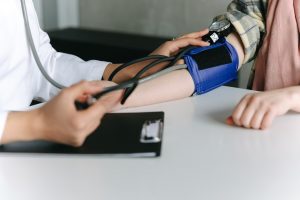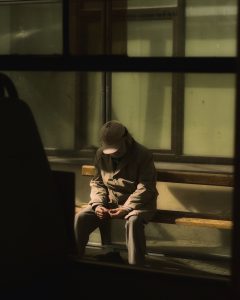Hugh’s Story
Case Study Downloads
- Meet Hugh (PPT)
- Hugh’s Story (Single Slide) (PPT)
- Hugh’s Story (DOCX)
- Teaching Notes (In Progress)
Applicable Courses
- Social Determinants of Health
- Health Promotion and Active Living
- Anatomy & Physiology
- Pathophysiology
- Altered Physiology
- Perspectives in Aging
- Health Research
Hugh’s Story
Hugh was born in 1945 and grew up near Sunnybrook in Toronto. He went to private school and did well in his studies, with the goal of becoming a lawyer. He articled at a prestigious law firm in Toronto where he met Gladys, the daughter of one of the firm’s partners. He joined the law firm once he passed his bar exam and married Gladys shortly after.
Hugh worked long hours and within three years made junior partner. In 1971, he and Gladys’s son, Paul, was born. Hugh continued to work long hours and weekends, often missing out on Paul’s milestones.
Due to the demands of Hugh’s job and the couple’s social status, it was decided that Paul would be sent to boarding school once he started kindergarten.
Hugh and Gladys entertained often, socializing with the elite of Toronto. Rich foods and large amounts of alcohol were an everyday occurrence for this couple.
In 1990, Hugh was seen by his family physician for headaches, vision problems, fatigue, and occasional nose bleeds. Hugh was diagnosed with Stage 2 hypertension (blood pressure 150/90) and given instructions to change his lifestyle.
Diagnostics
- 24-hour blood pressure monitor
- Routine tests: urinalysis, CBC, electrolytes, BUN, creatinine, cholesterol test, ECG, echocardiogram
Hugh was put on a diuretic and angiotensin converting enzyme (ACE) inhibitor. He was able to manage his hypertension with these medications. However, he did not change his lifestyle as recommended by his physician.
Medications:
- Furosemide (Lasix) – loop diuretic
- Ramipril (Altace) – ACE inhibitor
In 2011, Hugh retired. Due to her cognitive and physical deterioration, Gladys required his attention. He needed to be home more to facilitate her care. Over time, Gladys had to move into a long-term care institute.
Hugh was now experiencing urinary issues that he had attributed to the normal aging process:
- Frequent or urgent need to urinate
- Increased frequency of urination at night (nocturia)
- Difficulty starting urination
- Weak urine stream or a stream that stops and starts
- Dribbling at the end of urination
- Inability to completely empty the bladder
Once again, Hugh decided to see his family physician. Physical examination and mildly elevated serum prostate-specific antigen (PSA) confirmed that Hugh had benign prostatic hyperplasia (BPH). BPH is a common condition as men age. An enlarged prostate gland can cause uncomfortable urinary symptoms, such as urine flow blockage out of the bladder. It can also cause bladder, urinary tract or kidney problems. His physician wanted Hugh to have a routine colonoscopy as Hugh’s fecal immunochemical test (FIT) was back positive.
Given Hugh’s symptoms, he was scheduled for a transurethral resection of the prostate (TURP). A lighted scope is inserted into the urethra, and the surgeon removes all but the outer part of the prostate. TURP generally relieves symptoms quickly, and most men have a stronger urine flow soon after the procedure. After TURP a catheter may be temporarily needed to drain the bladder.
Hugh no longer had urinary issues, was sleeping better, had more energy, and was relieved that it was “nothing much”. Two months after his TURP, Hugh went in for his routine colonoscopy.
A colonoscopy lets a doctor look at the lining of the entire colon and rectum using an endoscope.
Abnormal results may show:
- diverticulosis (abnormal pouches in the lining of the colon)
- hemorrhoids
- inflammatory bowel disease (ulcerative colitis or Crohn’s disease)
- bleeding in the colon or rectum
- polyps
- cancer of the colon or rectum
Biopsies were taken during the colonoscopy for testing in the lab. The pathologist reported Stage I colon cancer. Hugh required a bowel resection which left him with a colostomy. With Gladys in long-term care, Hugh was living alone. Home care was instructed to teach him proper ostomy care.
Hugh’s self-image was suffering. He did not go out, and was not eating properly due to fear of leakage at the ostomy site. He led a very sedentary life. He also had concerns about the welfare of his son, Brian, who had Down syndrome and lived with Hugh at home: who would look after him once Hugh was gone? Hugh considered reaching out to his older son, Paul, but the two of them had not spoken in years. Ultimately, Hugh was unable to get Paul’s help in caring for Brian and himself.
Instead, Hugh spent time researching institutions where Brian could live. The only option Hugh could see for Brian’s wellbeing was sending him to a home for “people like him.”
Case Key Words
- Alcohol
- Cancer
- Cardiovascular-circulation
- Colon Cancer
- Colostomy
- High Blood Pressure
- Hypertension
- Prostate
- Urinary System




